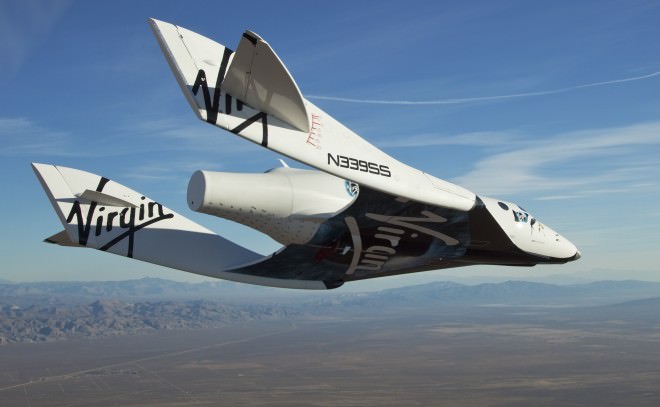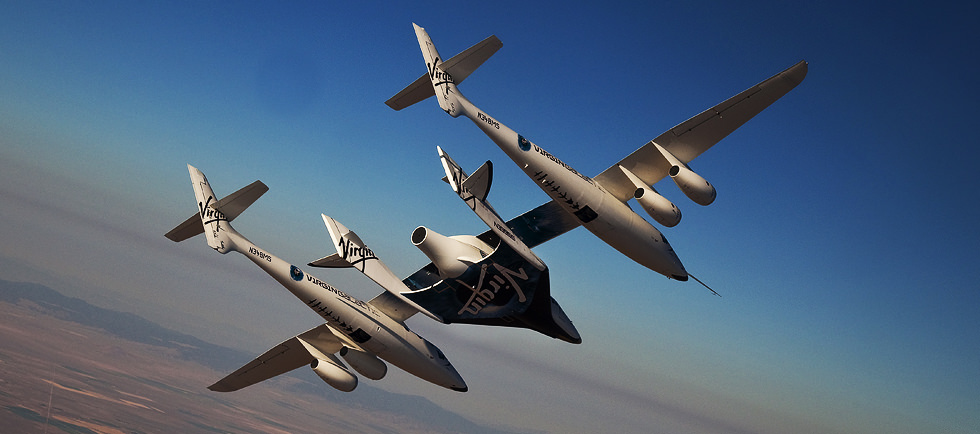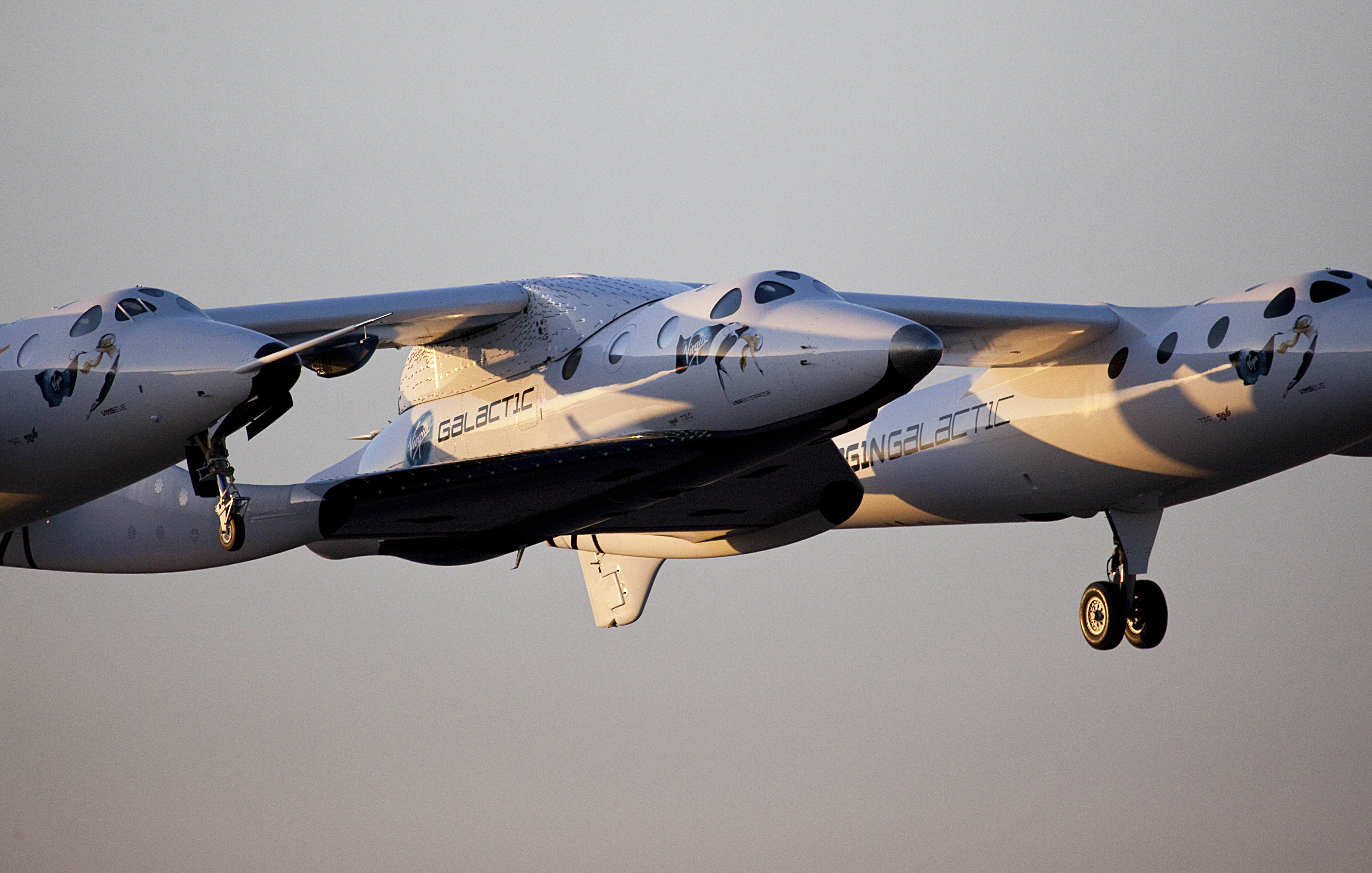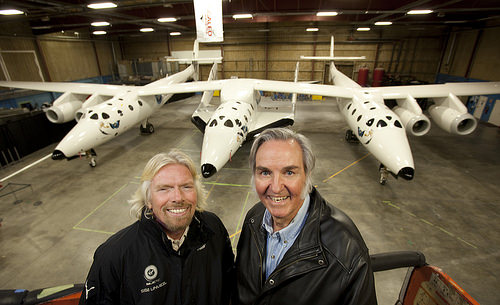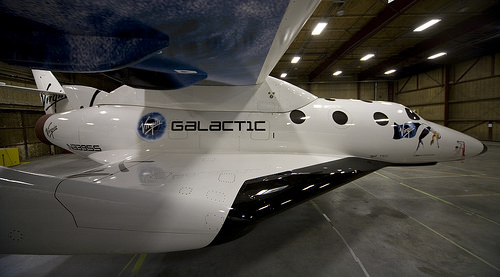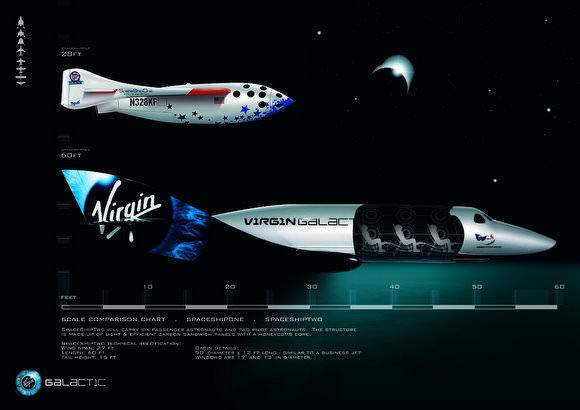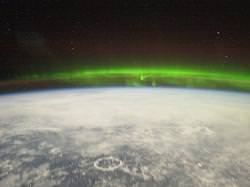[/caption]
Does this image look futuristic? Well, the future is here, as this is an actual image from October 10, 2010 (today!) Virgin Galactic’s future passenger ship made its first manned glide flight on Sunday. SpaceShipTwo’s unpowered flighted lasted about 11 minutes after the spacecraft was released from its White Knight Two mother ship, Eve, at 13,700 meters (45,000 feet) over the Mojave Desert. Scaled Composites test pilot Pete Siebold flew her down to the Mojave Spaceport, with with Mike Alsbury as co-pilot. “The VSS Enterprise was a real joy to fly,” said Siebold after landing, “especially when one considers the fact that the vehicle has been designed not only to be a Mach 3.5 spaceship capable of going into space but also one of the worlds highest altitude gliders.”
UPDATE: Virgin has now released a video of the flight, see below.
SpaceShipTwo will carry six people in addition to two pilots, providing those on board with a view of space and several minutes of weightlessness once space flights begin. Eventual operational flights of SpaceShipTwo will occur from Spaceport America in New Mexico. Latest word is that the first passenger flights could begin in 2011.
All the flight and all systems appeared to operate trouble free. After a clean release, Siebold completed initial flight handling and stall characteristic evaluation of SpaceShipTwo. After completing a practice approach and landing, Siebold made a smooth landing.
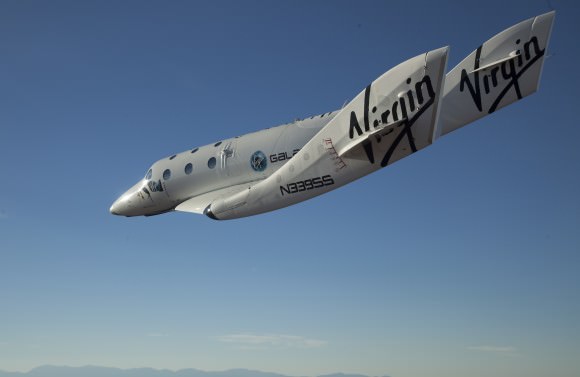
“This was one of the most exciting days in the whole history of Virgin,” said Richard Branson, founder of Virgin Galactic. “For the first time since we seriously began the project in 2004, I watched the world’s first manned commercial spaceship landing on the runway at Mojave Air and Space Port and it was a great moment. Now, the sky is no longer the limit and we will begin the process of pushing beyond to the final frontier of space itself over the next year.”
“This is a critical milestone in Virgin Galactic’s test program and a great day for the commercial spaceflight industry,” added John Gedmark, Executive Director of the Commercial Spaceflight Federation. “At the end of the day, getting hardware off the ground is what it’s really all about. Today’s SpaceShipTwo test flight marks another key milestone towards opening the space frontier for private individuals, researchers, and explorers. Congratulations to the entire SpaceShipTwo team.”
SpaceShipTwo and WhiteKnightTwo are being developed for Virgin Galactic by Scaled Composites, who built SpaceShipOne, the first privately-built vehicle to fly a person into space, which won the $10 million Ansari X PRIZE.
Future passengers will be flown about 100km (62 miles) above the Earth and experience several minutes of weightlessness before returning to Spaceport America. Tickets cost $200,000 and deposits start from $20,000. Find more info about passenger flights at Virgin Galactic’s website

